Learn to grow microgreens at home, join Grow It Local +
Learn > How To
Autumn in the Garden
So, it’s that time of year when we say goodbye to summer and autumn sticks its head around the corner to let us know that it still exists. It’s also that time of year when you start planning that next gardening project because stepping outside the house past 11am is okay and you won’t get liquified.
Now, at the perfect moment, you’ve found this blog post. It’s almost as if we read your mind. I get it, you have a lot of questions and I have answers, they may not be the right answers, but I certainly have some ideas about gardening in autumn that you can adapt depending on where you are reading from.
Every garden is different and this blog post is more so a general guide. I’m making this disclaimer now because in Adelaide, we have what’s called a “Mediterranean” bioregional climate. HOWEVER, we also have “Microclimates” within our bioregion and these can change from suburb to suburb.
For example if you live in the Adelaide Hills, you are closer to a cool temperate or cool mountain microclimate, whereas people who live closer to the beach have a coastal warm temperate/Mediterranean climate. Some properties can have multiple different microclimates depending on locality, positioning and established trees. It’s important that when you take in information about gardens, you adapt it to your situation and what that looks like in your garden, because at the end of the day, the person who knows the most about their garden is you.
Now with that disclaimer aside I’ll introduce myself.
My name is Kym Ormond, I’m co-owner of Port Adelaide Food Gardening or PAFG. I run the business alongside my wife, Jenny. PAFG officially started up in September, 2019 and since then we’ve been off our feet helping people grow food.
PAFG is a plant nursery with a permaculture ethos that specialises in edible plants, wicking beds, worm farms, workshops, food gardening consultancy and also, apparently, writing blog posts.
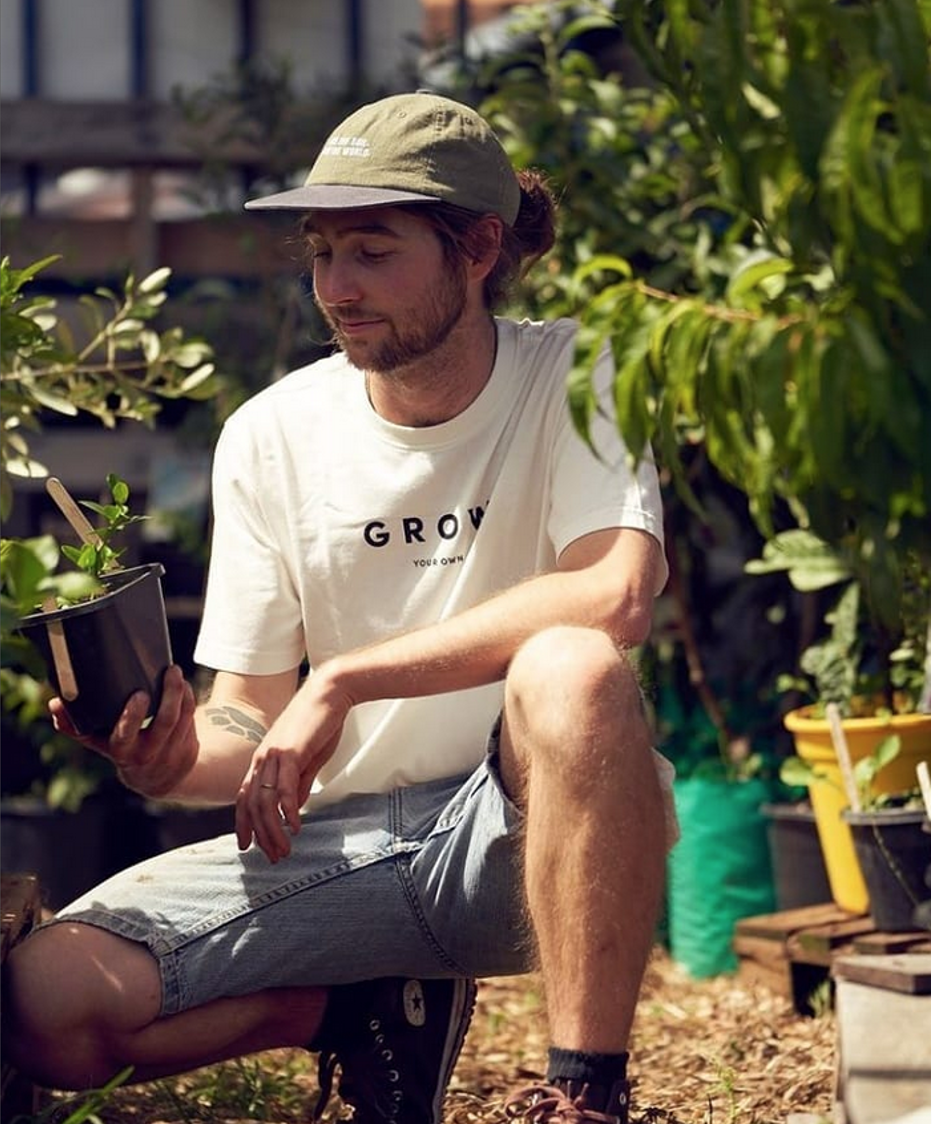
I was bitten by the permaculture bug back in 2015 when Jenny and I went travelling around Australia. During this time we volunteered on farms and happened to find ourselves at a property with a permaculture ethos. Very quickly, after falling in love, I found one of the few places you could study permaculture at the Byron Bay community college.
So, I know what you’re thinking, what is permaculture? Should you care about it? And why do I keep mentioning it every second sentence?
Permaculture itself is a set of design principles and three core ethics (earth care, people care and fair share) that can get applied to almost every situation. Permaculture comes from ‘permanent culture’. So really, it’s a design system for living in a way that ensures our culture, our lives, are permanent. Some people call this sustainability.
For me personally, I describe permaculture as giving me the tools for what I need in that particular moment in time. Permaculture is very contextual to each location but it often focuses on creating edible forest gardens that mimic nature and create an ecosystem whilst getting the benefit of an edible crop. It’s not to say your regular veg doesn’t have a place in permaculture, but there is a preference for perennial plants, when possible, which is also the perfect segway into our next paragraph.
To keep it simple, perennials are plants that can live for 3+ years, they can be short lived (3-9ish years) or long lived perennials (10-100+ years). You also have annual plants that live for one season and biennial plants that live for two. For example, a carrot is an annual, an eggplant can be biennial (if the conditions are right) and a lemon tree is perennial.
Autumn is such a great time for planting perennials like fruit trees because it is a great sweet spot where the majority of the harsh heat has dropped off, rainfall (hopefully) increases, and the soil is at a nice temperature.
This time of year I generally write myself a checklist for the upcoming season and it roughly looks something like this:
My typical Autumn checklist:
- Remove finishing / finished summer crops
- Sow green manure / cover crop
- Reapply soil improvers compost / biochar / manures / mulch
- Start sowing Autumn annuals and slow Winter veg
- Remember to organise Jenny’s birthday present before May *
- Collect fallen leaves and prepare compost area
- Repot / plant deciduous fruiting plants and late subtropical plantings
* Seriously don’t forget
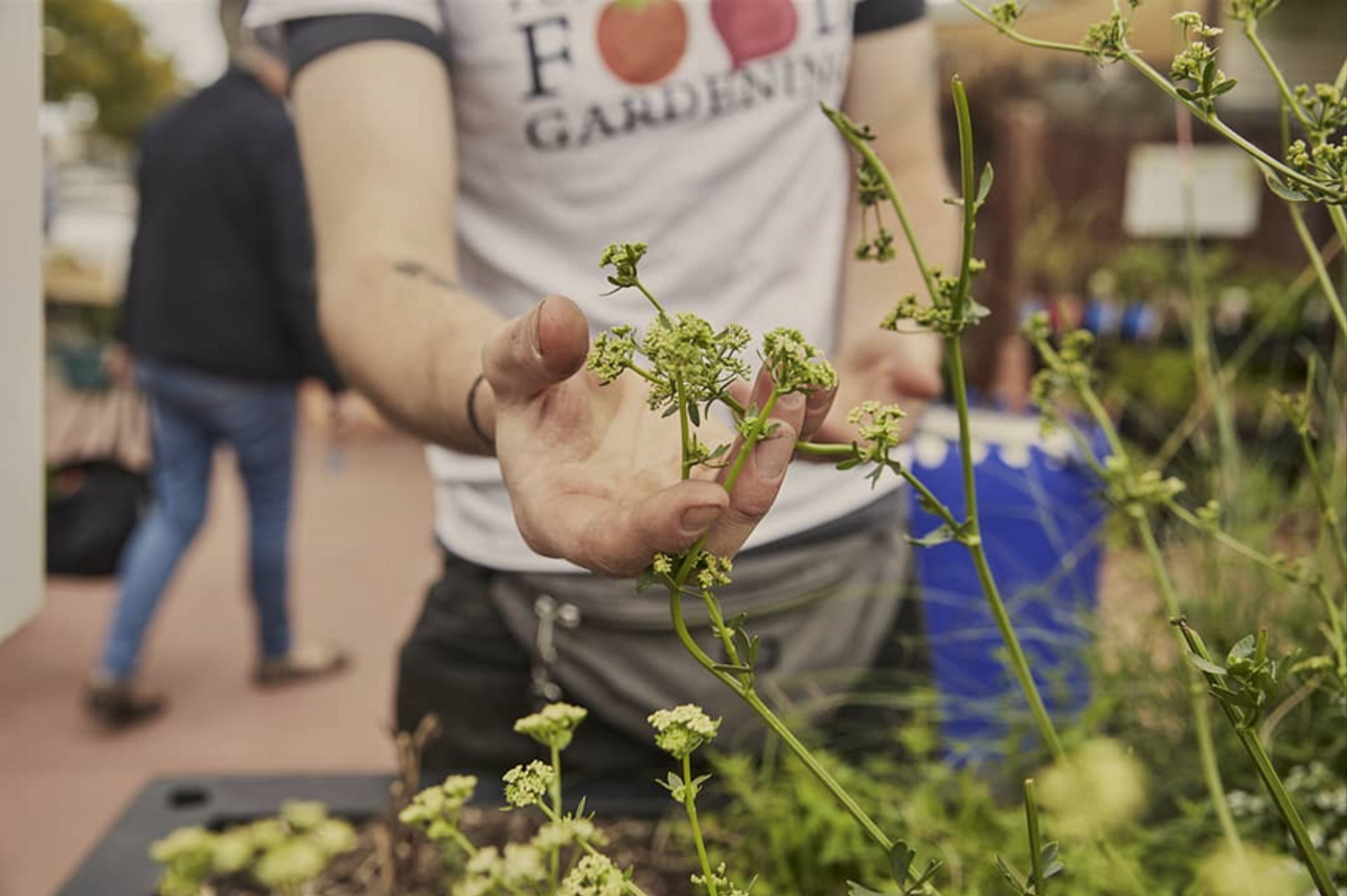
Our LOOOOOONG list of what to plant and do in Autumn
Plant Fruit Trees (Everywhere)
The term deciduous refers to the yearly cycle of the plant losing its leaves as winter approaches and reshooting in spring. We recommend that deciduous fruit trees can go in the ground from autumn right through to Spring.
Some of the many deciduous fruit / nut trees that grow well across greater Adelaide: Almonds, apples, apricots, cherries, feijoas, figs, mulberries, nectarines, olives, peaches, pears, plums pomegranates, quinces and walnuts.
Each of these plants have a vast array of different varieties that can really knock your socks off.
Subtropical fruiting plants like avocados, citruses and guavas can be planted in Autumn but only if the soil or planting area has a soil temperature of 18+ degrees. Some microclimates will give you the option to do this but if it isn’t hot enough don’t risk it or your new citrus tree will hate you and boy do they let you know!
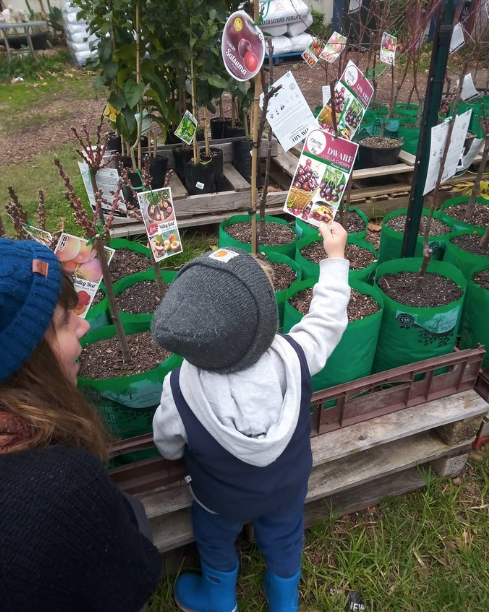
Companion planting with fruit trees and perennials
The way I look at companion planting is you’re basically match making plants to fall in love with each other. Essentially, you’re the physical form of Tinder for plants but without the seedy (pun intended) hangovers.
Anyway, comparisons to dating apps aside, creating and finding the right companion plants is a bit of an art. It honestly takes some research and a bit of experimenting to get the formula down but I PROMISE it works. I will share all the secrets I’ve picked up in the hopes that it will help speed up the process for you.
THE CLASSIC 7-LAYER FOREST GARDEN GUILD:
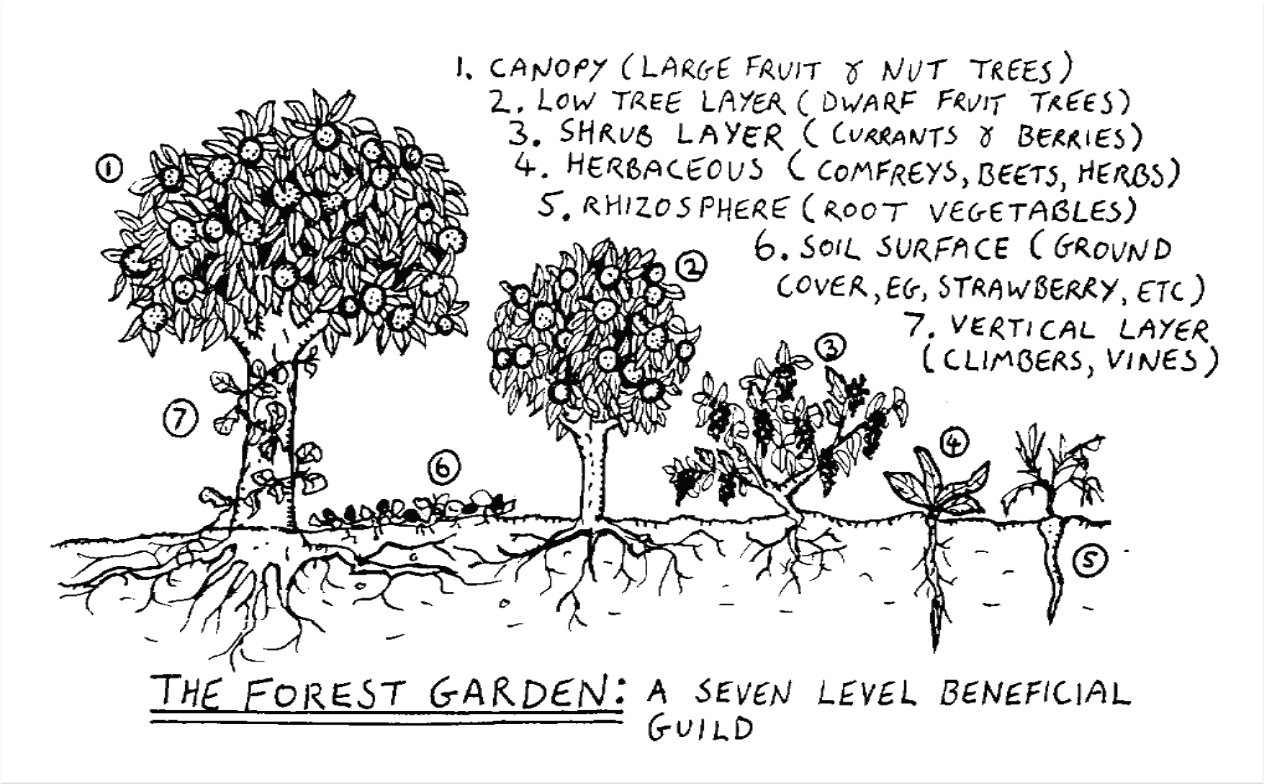
In permaculture we call fruit trees with companion plants a “guild” and we build our fruit tree guild by stacking different plants that have different heights, root systems, flowering times and other beneficial functions that will cooperate with their surrounding plants.
Although you can have 7 layers in your guild, I like to start off with a simple 3 or a trio. Typically, my trio guilds will have a high, medium and low. For example, a quince tree (Cydonia oblonga) can be my ‘high’ plant, tansy (Tanacetum vulgare) could be my ‘medium’ bush, and a native groundcover like creeping boobialla (Myoporum parviflorum) could be my ‘low’.
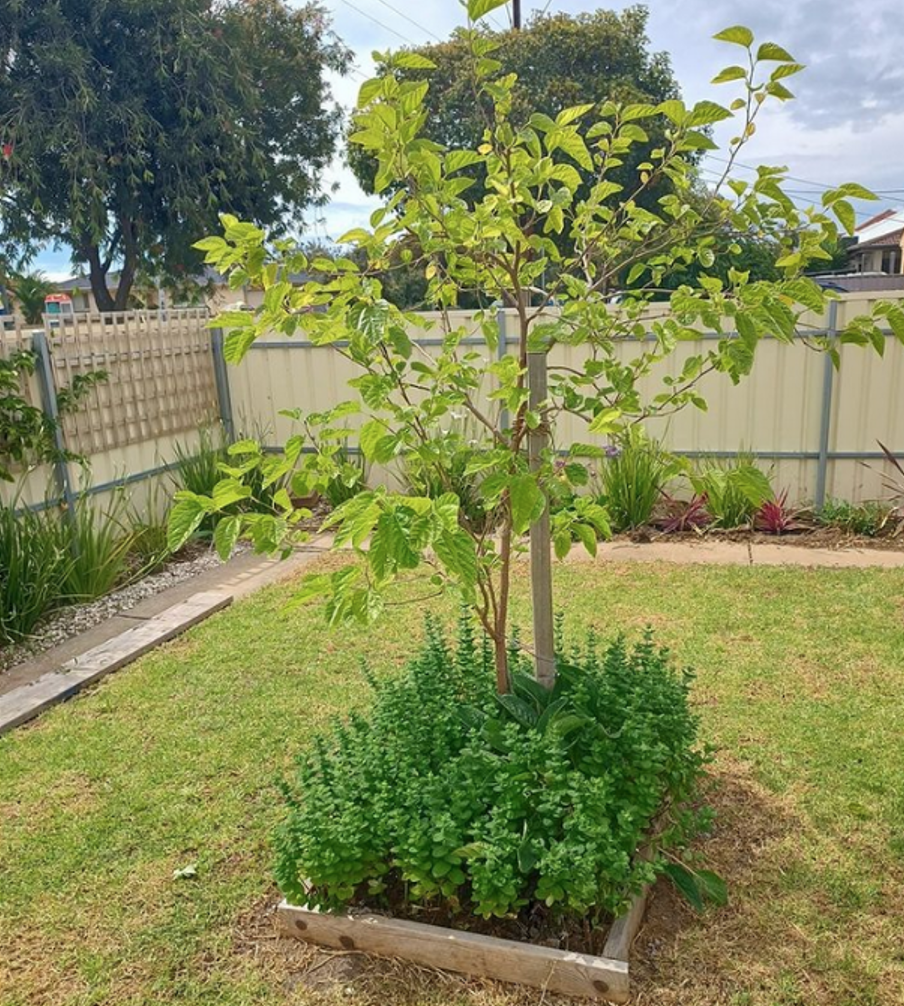
From there I have my main 3 and I can then build on the extra layers.
This hicks fancy mulberry tree was constantly battling the horrible kikuyu grass but after setting up a wooden border and integrating a couple of comfrey pants and apple mint, the kikuyu grass didn’t stand a chance.
The apple mint has the following functions in this guild:
- Wall against kikuyu grass
- Attracts pollinators via flowers
- Edible ground cover
- Acts as living mulch
- Shallow roots don’t affect the mulberry
Native plants
Autumn is THE best time to plant natives. Most native plants endemic to Adelaide come in tube stock (small long square pots). Planting in Autumn gives them a solid amount of time to chunk up and be ready to take on the Summer heat. It’s always a good idea to double check if the native plant you’re buying is endemic (native) to your region as some natives from different bioregions in Australia end up in nurseries and are marketed as a locally native plant when they are not.
Garlic
If you haven’t started growing your own garlic, do it. Like seriously, drop what you’re doing this very second and start prepping your garlic beds. I have personally the method of planting around ANZAC Day and harvesting close to Remembrance Day. Pick up some organic bulbs, separate the cloves (leave the papery skin on) and plant in the ground 10-15cm apart with the pointy end up. They take forever to grow but are well worth it.
Seasonal Annual Veg / Herbs
There’s loads of really cool seasonal herbs and veg that can grow this time of year. Cooler season Autumn / Winter gardens don’t really get much credit for the crops that thrive this time of year. The cooler seasons are actually my preferred time to get in the garden because you can do all the hard yards without breaking a sweat and the garden constantly gets watered from mother nature.
HERBS: coriander, chives, dill, mints, parsley, thyme
SALAD / LEAFY GREENS: bok choy, chicory, corn salad, kale, mustard, miners’ lettuce, rainbow chard, rocket, silver beet, spinach
FRUITING VEG: bush beans*, broccolis, cabbages, cauliflowers, fennel, peas, snow peas, sugar snap peas.
ROOT CROPS: beetroot, carrots, leeks, spring onion, onions, parsnip, radish, turnips
*Only if you’re in the Adelaide plains
Compost like there’s no tomorrow
Nothin’ like the smell of compost in the morning. Autumn and Winter is the BEST time for compost. During Autumn, we get blessed with all of the deciduous trees giving us a beautiful supply of carbon for our composts. It’s also the perfect cooler weather to spend some time therapeutically shovelling compost into bays and mixing the right nitrogen and carbon formula for the perfect hot compost pile. Let it mature for a few months and have beautiful ready compost in time for Spring planting.
You can keep up to date on the Port Adelaide Food Gardening adventures via our social media and you can visit our nursery at 47 Street Vincent, Port Adelaide on Weekends from Friday – Sunday, 10am to 4pm.
Happy Gardening!
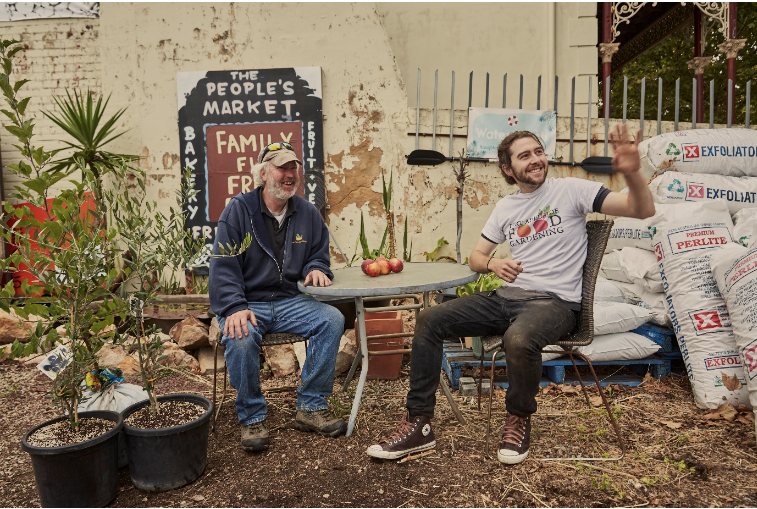
Content credit to Kym Ormond and a big thanks to our partners @GreenAdelaideSA




